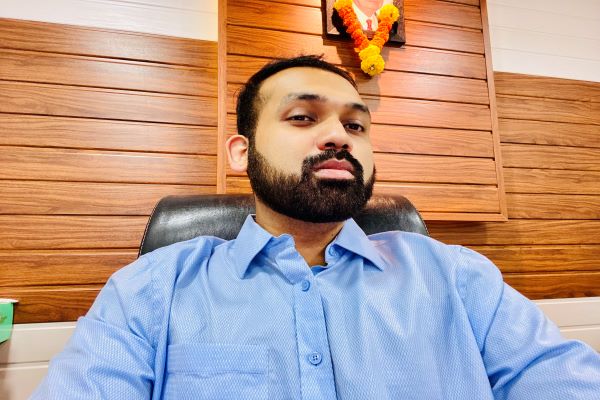As the world celebrates World Glaucoma Week (March 7-13th), Nikkhil K Masurkar, Executive Director, Entod Pharmaceuticals, an authority on eye diseases spoke to Thomas C Thottathil, Editor, indianpharmapost.com, on the seriousness of Glaucoma

,
How serious is the issue of Glaucoma amongst Indians?
An estimated 76 million people globally have glaucoma and approximately 4.5 million people are blind because of the condition. In India, it is the leading cause of irreversible blindness with at least 12 million people affected and nearly 1.2 million being blind from the disease. According to the World Health Organization, approximately 95 million people will be affected with glaucoma by 2030. Glaucoma is one of the leading causes of blindness, especially for people over the age of 60.
What should one do to prevent the onset of Glaucoma? Is there a lack of awareness and at what age should one be made aware of the same?
Get regular dilated eye examinations. Regular comprehensive eye exams can help detect glaucoma in its early stages before significant damage occurs. Glaucoma also tends to run in families. So, people with a family history of glaucoma need to be more cautious. Regular, moderate exercise may help prevent glaucoma by reducing eye pressure. Other than that, glaucoma eyedrops can significantly reduce the risk that high eye pressure will progress to glaucoma.
Awareness of glaucoma in India is low. Lack of education and lower socioeconomic status are the major risk factors for the late presentation of glaucoma. People should be aware of the same as early as possible. As awareness about glaucoma can lead to early detection, it is a very important step in preventing glaucoma-related blindness; similarly educating the masses will offer a promise of improving awareness.
Is lifestyle one of the issues that lead to Glaucoma? Why is it impacting children?
The traditional view has been that lifestyle choices do not play a role in glaucoma, but several studies show that lifestyle factors can influence eye pressure, which is a major risk factor for glaucoma. There is little data, however, on whether these factors impact the development (or worsening) of glaucoma. Childhood glaucoma — also known as congenital glaucoma, pediatric, or infantile glaucoma — occurs in babies and young children. It is usually diagnosed within the first year of life.
This is a rare condition that may be inherited, caused by incorrect development of the eye’s drainage system before birth. This leads to increased intraocular pressure, which in turn damages the optic nerve.
If one gets detected with Glaucoma, what is the medical intervention to cure it?
The most common treatment for glaucoma is prescription eye drops. They work by lowering the pressure in the eye and preventing damage to the optic nerve. These eye drops won’t cure glaucoma or reverse vision loss, but they can keep glaucoma from getting worse. Laser treatment is also used to help improve fluid drainage from the eye. While the laser can complement the use of eye drops, it may not replace it completely. The results from laser treatments vary, but can last up to five years. Surgery is another way to help reduce eye pressure. It is more invasive but can also achieve better eye pressure control faster than drops or lasers.
Does it affect people across economic strata and is it region-specific, considering that India is a vast country?
Glaucoma can affect any individual irrespective of his/her economic status, geography, age and gender. People with a family history of glaucoma are almost 10 times more likely to develop glaucoma themselves.
Do we have enough specialists working in the field of eye diseases to help identify the issue at the right time?
As per official statistics, there are about 18,000 ophthalmologists in India. Although the WHO recommends a population to ophthalmologist ratio of 1:100,000, in India the distribution varies from 1:25,000 in some urban pockets to 1: 250,000 and below in others. Inadequate facilities and lack of access are adversely affecting eye care in India. The lack of infrastructure and unequal distribution of eye care facilities in the country are major causes of concern. The country needs advanced centres in peripheral areas to enhance the reach of medical interventions and screening the high-risk population.
What's the role of Entod Pharma in providing effective solutions for eye disorders?
We cater to the therapeutic needs of patients worldwide. Globally we have over 250 products in our portfolio, a global field force of over 1000 and highly experienced Quality Assurance, Production and R&D teams. Our products are sold in over 55 countries including the EU, UK , Africa and Asia. Our quality systems are certified in Europe and our manufacturing quality standards adhere to international GMP norms. Our therapeutic areas of expertise include dry eyes, glaucoma, eye infections, post-cataract and post-LASIK medication. To increase awareness about eye diseases in the country, we frequently organise eye care camps and implement awareness drives on eye care in India. We recently collaborated with Sarojini Devi Eye Hospital in Hyderabad to engage in glaucoma awareness initiatives across the city. Also, free glaucoma check-up camps will be conducted in the hospital throughout the entire glaucoma week, where more than 1000 patients will be screened.

Subscribe To Our Newsletter & Stay Updated